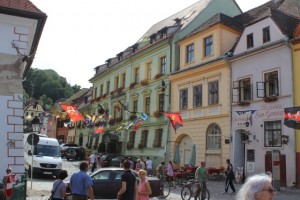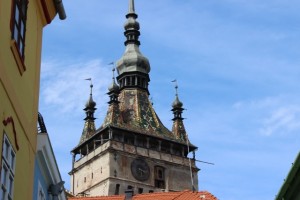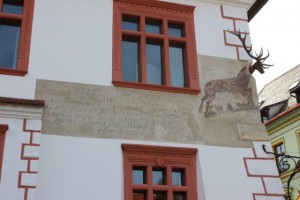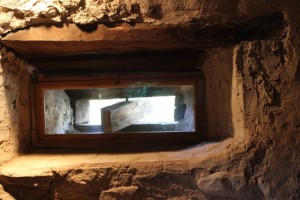We left Budapest on an overnight train to Sighisoara, Romania. I did not sleep well on the train, because it was hot and muggy, and the bunk was too short for me. Sighisoara itself has a small “old city” on a hill, which is surrounded by the larger, more modern, main part of the city.
We stayed at the Hotel Sighisoara in the old city.
One of the entrances to the old city is through a gate in the base of a clock tower. The clock has figures that are supposed to perform actions on the hour, but the clock has been broken for a long time.
One building had an interesting architectural feature. I have no idea what’s going on, other than I presume someone thought it was appropriate.
Sighisoara is the birthplace of Vlad Dracula, also known as Vlad Tepes (Vlad the Impaler), a name he was given after his death. There is a picture of this bust of him in the Wikipedia article about him. The plaque reads (with a few Romanian letters I haven’t used):
1431-1476
Domnitor al Tarii Romanesti
Intre Anni
1448;1456 – 1462;1476
It means, “Vlad Tepes, 1431-1476, Ruler of Romania during the years 1448-1456 and 1462-1476.”
The name “Dracula” came from his father, who was a member of the chivalric Order of the Dragon (“dragon” being “dracul” in Romanian back then – we were told it has a meaning more like “devil” now). The house he was born in is now a restaurant, which we ate in the first night there.
We took a day trip to see a few old villages and churches. The only photo I’m showing from that trip is of a window – you can see that there is a glass pane that’s been added, but the original window has a wooden block used to “close” it.
The afternoon of our second day in Sighisoara, we took a bus to Brasov.






